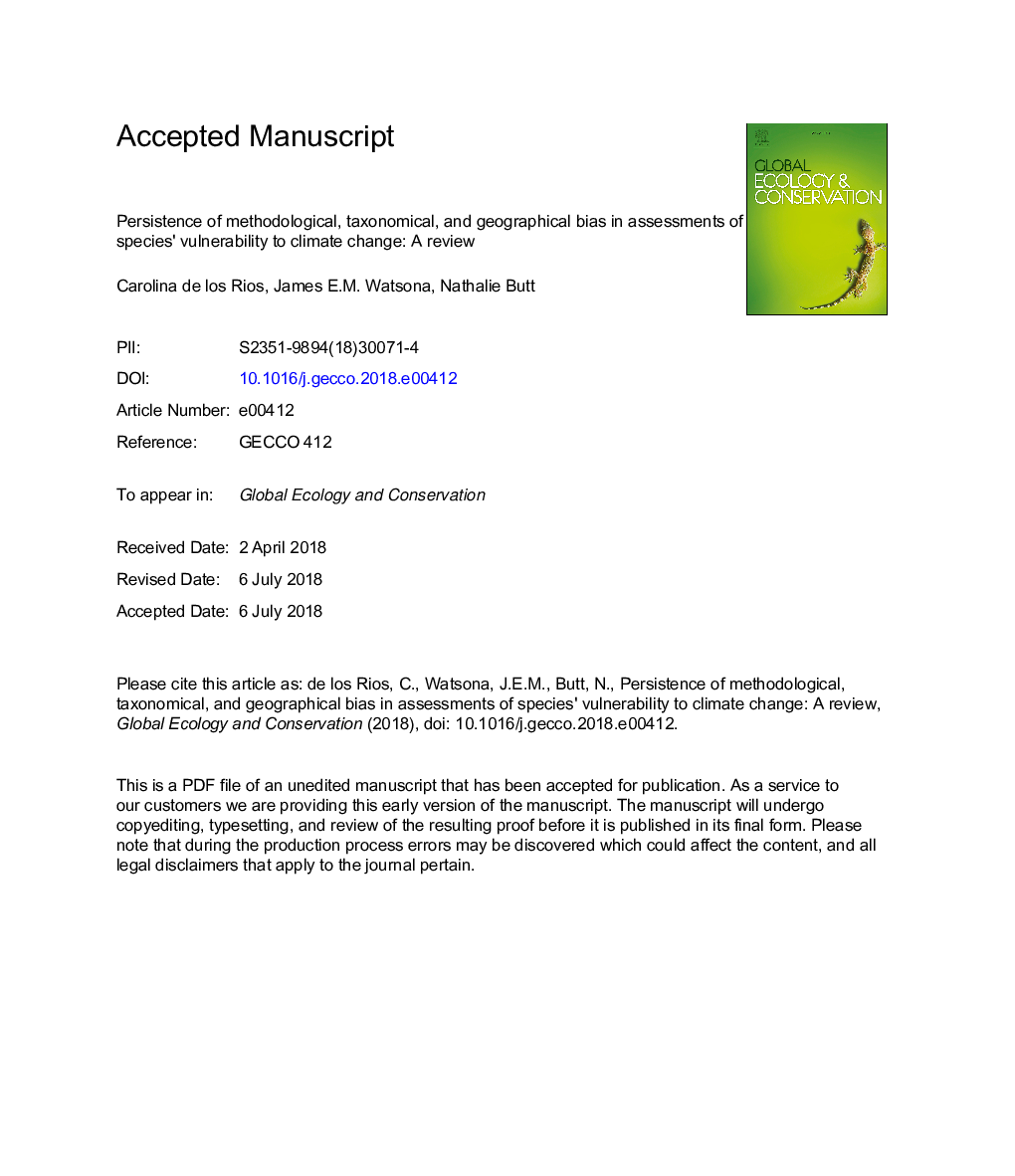| Article ID | Journal | Published Year | Pages | File Type |
|---|---|---|---|---|
| 8846199 | Global Ecology and Conservation | 2018 | 23 Pages |
Abstract
Species' vulnerability to climate change has become a well-researched field in recent years: between 2000 and 2016, at least 743 articles reporting climate change vulnerability were published in the conservation literature. We reviewed this literature to assess the different methods used to assess vulnerability, how and whether vulnerability was formally assessed, and whether there are trends and biases in either the taxonomic group or the geographic focus of the studies. We found that mechanistic assessment methods prevailed, especially in plant-focused research. Species' exposure to climate change was considered by almost all research articles (nâ¯=â¯741), but other key components of vulnerability, such as sensitivity and adaptive capacity, were addressed only by a minority (nâ¯=â¯499 and nâ¯=â¯103, respectively). Plants (nâ¯=â¯372) were by far the most studied taxon; invertebrates (nâ¯=â¯138), birds (nâ¯=â¯70), fishes (nâ¯=â¯70), mammals (nâ¯=â¯68), and other (nâ¯=â¯42) were the next most studied, but an order of magnitude lower. In terms of the locations of published studies, we found a clear bias towards most-developed nations. Research that does not focus on all three vulnerability components tends to either under- or over-estimate a species' vulnerability to climate change or how they may be impacted. The identified spatial and taxonomic bias means a narrow understanding of the consequences of climate change. More resources should be directed towards the study of under-represented taxa, especially those in less developed countries, in order to gain a more holistic insight on the vulnerability of biodiversity to climate change.
Related Topics
Life Sciences
Agricultural and Biological Sciences
Ecology, Evolution, Behavior and Systematics
Authors
Carolina de los RÃos, James E.M. Watson, Nathalie Butt,
